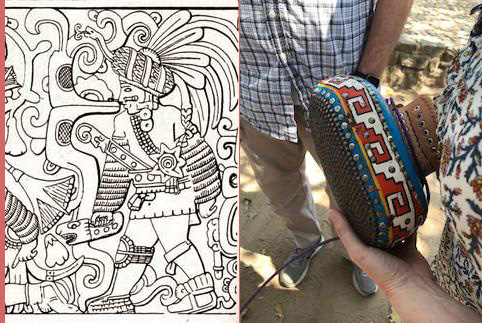S3 E9 The Mesoamerican Ballgame
About 4000 years ago, the civilizations of Mesoamerica created the world’s first team sport – older by centuries than any other. It was played with a big rubber ball, in a stone-built ball court, and enjoyed from the Chihuahua Desert to the rainforests of Honduras.
Show Notes:
Here’s a comparison of the ballgame paddle that I saw at San Jose Mogote compared to the one the ballplayers at Chichen Itza’s ballcourt are shown holding:

2 Replies to “S3 E9 The Mesoamerican Ballgame”
Comments are closed.

Have you considered the possibility that the sportive ball game might have been a dualistic ritual mechanism for containing collective violence that could have otherwise been erupted to destroy the polity from within or otherwise directed outwards by an (over-) militarized society? This might explain why Teotihuacan with its triumphant armies does not have any known ball courts. The sacrificial underpinnings of the game would have served a similar role. OTOH the blood indispensably shed at the ritual nurtured & resuscitated life (corn), OTOH the rules ensured it was shed productively.
https://www.svabhinava.org/violence/Violence&Other-Springer.pdf (pp.85-89)
Have you considered the possibility that the sportive ball game might have been a dualistic ritual mechanism for containing collective violence that could have otherwise erupted destroying the polity from within or instead directed outwards by an (over-) militarized society? This might explain why Teotihuacan with its triumphant armies does not have any known ball courts. Its sacrificial underpinnings would have served a similar role. OTOH the blood indispensably shed at the ritual nurtured & resuscitated life (corn), OTOH the rules ensured it was shed productively.
https://www.svabhinava.org/violence/Violence&Other-Springer.pdf (pp.85-89)